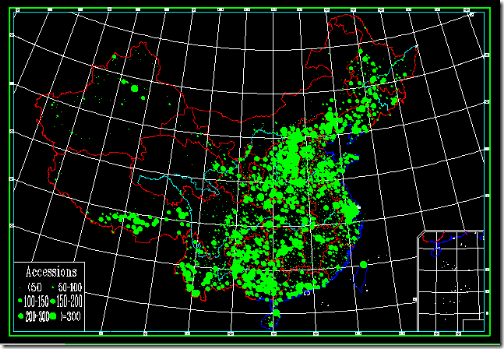又是一篇讲种质资源科学家的新闻文章,一个来自ICARDA的搞大麦资源的科学家叫Dr Ken Street的故事。呵呵,来自http://www.queenslandcountrylife.com/,原文链接地址http://sl.farmonline.com.au/news/nationalrural/grains-and-cropping/general/seed-hunter-reaps-success/1628938.aspx?storypage=0
NND,里面又提到了中国,说从中国和巴西搞资源实在是太难了,哈哈哈哈
———————————————————————–
‘Seed Hunter’ reaps success
It’s topical because it neatly dovetails with the on-going climate change debate, requiring existing commercial crops be scrutinised to see whether more resistance can be bred into them by accessing ancient crop varieties which still exist in some of the remotest parts of the world.
The idea is to seek out as many variations as possible in the hope that key traits like a plant’s ability to thrive in harsh temperatures using less water, for instance, can be bred from the genes stored in seed banks around the world.
The Seed Hunter’s work is taking place against a backdrop of exploding global populations, widespread loss of arable farmland, requiring researchers like Dr Street to look further afield in his bid to seek out “novel genes” able to deliver genetic improvements.
Much of his efforts are being directed towards encouraging the plant-breeding community to make greater utilisation of gene banks which mostly will release their material free of charge, although it is more difficult to obtain germplasm from countries like China and Brazil, for example.
Nevertheless, Dr Street remains undaunted, conceding there is duplication – probably in the order of 35 percent when it come to barley – within seed banks around the world.
“Getting what you want out of a gene bank is a little bit like looking for the proverbial needle…so the question becomes, how can we rationalise the search, or the trait we are looking for?” he said.
The point being made here is that it really has been “a matter of luck” when a plant breeder makes a specific request of a gene bank.
“What is needed is a repeatable and rational method to improve that flow of useful genes into the wider community,” Dr Street said.
Increasingly, he is focusing his attention on an approach known as FIGS (Focused Identification of Germplasm Strategy).
It’s all about assessing the environmental influences acting on plant populations, tracking their genetic variations in the quest for sought-after traits which might range from seed quality to dormancy issues, to name but a few.
Today, increasing emphasis is being placed on geo-referencing each collection site so all the related agri-climatic factors can be minutely detailed – to see how temperature, for instance, may have influenced the well-being of plants in some far away paddock.
Journeying to countries like Tajikistan, Dr Street said he came across a rare wheat strain being curated by a family in an extremely remote district.
“They were very poor and probably will never see the benefit of those genes but they were happy to give them across – and gave us a nice meal as well,” he said.
And the discovery of a boron-tolerant wheat gene in South Australia is another example of the value of seed banks, according to Dr Street.
Meanwhile, FIGS also has been deployed across north Africa and central Asia, scoring a successful outcome in finding a strain of wheat that is resistant to Sunn Pest, described as “a nasty little bug” that kills juvenile cereal plants, also destroying grain quality.
Dr Street urged plant breeders globally to forge closer links with ICARDA.
“We will work with you to help you craft a set of materials that you won’t have to screen more than you should,” he said.
Buoyed by the current progress of FIGS, Dr Street accepts there is still room to improve its methodology.
“But the more we use it, the better we will we get,” he said.


